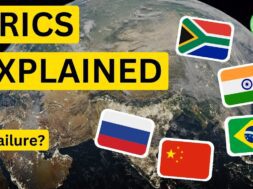The BRICS Explained
The BRICS group, consisting of Brazil, Russia, India, China, and South Africa,
is an informal alliance of emerging economies aiming to increase their influence in the global order. Established in 2009, BRICS was founded on the premise that international institutions were overly dominated by Western powers and had ceased to serve developing countries. The group has sought to coordinate its members’ economic and diplomatic policies, found new financial institutions, and reduce dependence on the U.S. dollar.
BRICS has expanded its membership to include Egypt, Ethiopia, Indonesia, Iran, and the United Arab Emirates. The coalition is not a formal organization but rather a loose bloc of non-Western economies that coordinate economic and diplomatic efforts around a shared goal. The group’s expansion comes with a range of geopolitical implications, representing growing economic and demographic heft.
The BRICS countries seek to build an alternative to the dominance of the Western viewpoint in major multilateral groupings, such as the World Bank, the Group of Seven (G7), and the UN Security Council. However, BRICS has struggled with internal divisions on a range of issues, including relations with the United States and Russia’s invasion of Ukraine. Despite these challenges, the group continues to exert influence over global economic and political affairs.
You can find more detailed information on [Wikipedia](https://en.wikipedia.org/wiki/BRICS).



